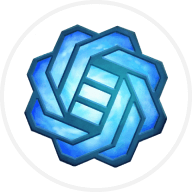
Radio Caca-Preis

Haftungsausschluss
OKX gibt keine Anlage- oder Vermögensempfehlungen. Du solltest gut abwägen, ob der Handel und das Halten von digitalen Assets angesichts deiner finanziellen Situation sinnvoll ist. Bei Fragen zu deiner individuellen Situation wende dich bitte an deinen Rechts-/Steuer- oder Anlagenexperten. Weitere Einzelheiten findest du in unseren Nutzungsbedingungen und der Risikowarnung. Durch die Nutzung der Website eines Drittanbieters („TPW“) akzeptieren Sie, dass jegliche Nutzung der TPW den Bedingungen der TPW unterliegt. Sofern nicht ausdrücklich schriftlich angegeben, steht OKX einschließlich seiner verbundenen Unternehmen („OKX“) in keinerlei Verbindung zum Eigentümer oder Betreiber der TPW. Sie stimmen zu, dass OKX nicht für Verluste, Schäden oder sonstige Folgen haftet, die sich aus Ihrer Nutzung der TPW ergeben. Bitte beachte, dass die Nutzung einer TPW zu einem Verlust oder einer Minderung deiner Assets führen kann. Das Produkt ist möglicherweise nicht in allen Ländern verfügbar.
Marktinformationen zu Radio Caca
Marktkapitalisierung = Umlaufmenge × letzter Preis

RACA-Rechner


Preis von Radio Caca heute in USD
Beliebte Radio Caca-Konvertierungen
| 1 RACA in USD | 0,000087130 $ |
| 1 RACA in EUR | 0,000076560 € |
| 1 RACA in PHP | 0,0049277 ₱ |
| 1 RACA in IDR | 1,4701 Rp |
| 1 RACA in GBP | 0,000065540 £ |
| 1 RACA in CAD | 0,00012060 $ |
| 1 RACA in AED | 0,00032003 AED |
| 1 RACA in VND | 2,2678 ₫ |
Über Radio Caca (RACA)
- Offizielle Website
- Block Explorer
Häufig gestellte Fragen zum Radio Caca-Preis
Radio Caca ist eine dezentrale autonome Organisation (DAO), die aktiv ihre Metaverse-Plattform, das Universal Metaverse, weiterentwickelt. Diese Plattform umfasst verschiedene Funktionen, wie zum Beispiel einen Marktplatz für nicht fungible Token (NFT) und ihr erstes Spiel.
Der Besitz von RACA-Tokens bietet zahlreiche Vorteile innerhalb des Radio Caca-Ökosystems. Es gewährt exklusiven Zugang zu NFT-Sammlungen, die Möglichkeit, durch Gameplay Belohnungen zu verdienen, und die Mitgliedschaft in einer der größten Blockchain-Communitys und fördert so ein lebendiges und ansprechendes Erlebnis für Token-Inhaber.
Kaufen Sie ganz einfach RACA-Tokens auf der Kryptowährungsplattform OKX. Ein verfügbares Handelspaar im OKX-Spothandelsterminal ist RACA/USDT.
Mit OKX Convert können Sie auch Ihre vorhandenen Kryptowährungen, einschließlich Bitcoin (BTC), Ethereum (ETH), Tether (USDT), und USD Coin (USDC), gegen RACA tauschen, ohne Gebühren und ohne Preisverfall.
ESG-Offenlegung
RACA-Rechner


Haftungsausschluss
OKX gibt keine Anlage- oder Vermögensempfehlungen. Du solltest gut abwägen, ob der Handel und das Halten von digitalen Assets angesichts deiner finanziellen Situation sinnvoll ist. Bei Fragen zu deiner individuellen Situation wende dich bitte an deinen Rechts-/Steuer- oder Anlagenexperten. Weitere Einzelheiten findest du in unseren Nutzungsbedingungen und der Risikowarnung. Durch die Nutzung der Website eines Drittanbieters („TPW“) akzeptieren Sie, dass jegliche Nutzung der TPW den Bedingungen der TPW unterliegt. Sofern nicht ausdrücklich schriftlich angegeben, steht OKX einschließlich seiner verbundenen Unternehmen („OKX“) in keinerlei Verbindung zum Eigentümer oder Betreiber der TPW. Sie stimmen zu, dass OKX nicht für Verluste, Schäden oder sonstige Folgen haftet, die sich aus Ihrer Nutzung der TPW ergeben. Bitte beachte, dass die Nutzung einer TPW zu einem Verlust oder einer Minderung deiner Assets führen kann. Das Produkt ist möglicherweise nicht in allen Ländern verfügbar.









